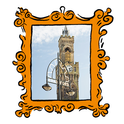I recently returned from a holiday in Costa Rica. While there, I found myself obsessively reading Eve Babitz’s 1977 essay collection, Slow Days, Fast Company. I would snatch moments to read it whenever I could, in between our early-morning birdwatching tours and beach-side afternoons.
I love Babitz’s writing, but if I’m honest, her work is also part of a new aesthetic that I’m trying to cultivate. I made sure to get a photo of myself posing on my deckchair in sunglasses with my copy of her book. I admit it, I’ve been swept up by the new “literary It-girl” online trend that has taken over my Instagram feed.
When I scroll, I encounter image after image of hot women posing nonchalantly with books, splayed out on beach towels with their faces obscured by the likes of Sylvia Plath, Joan Didion and Babitz. And then there are the countless posts, think-pieces and Substack essays analysing and sometimes imitating their work. Introspective writing is in. But, like all 21st-century trends, the rise of the “literary It-girl” is wrought in aesthetics.
Think big sunglasses (borrowed from Didion) and hats with dramatic, floppy rims (borrowed from Babitz). Cigarettes, black coffee, drugs—a trend powered by the same substances as the indie sleaze aesthetic of 2012, but this time with a literary twist.
The literary It-girl taunts me. As a young woman with literary ambitions, it’s terrifying to think I now need to be skinny and hot and effortlessly cool as well as being a good writer? I can’t just… write?
I’ve mentioned before in conversation with my fellow Lives writer Sheila Hancock how frustrated I feel with this creative climate. Obviously, it’s never been easy to make it as an artist, but we’ve found ourselves in an age that obliges aspiring artists to whore themselves out to the algorithm. We must build a “following” for our online persona if we are to reach any audience for our work.
I want, more than anything, to write, and yet I spend so much time pandering to the demands of the internet. And the pressure has only intensified with the emergence of the literary It-girl—now I have to curate an Instagram profile which screams “GIRL WRITER”.
As Helena Aeberli observed in her viral Substack essay, “in search of cool”: “We can’t just be writers; we have to be girl writers, in which girl is conjoined to an invisible adjective: hot. Or at least, we have to package ourselves as such. Because otherwise why would anyone want to read our work?...We want full access to a female artist’s body as well as their output.”
This is in keeping with an assumption that has always prevailed in the study of literature; “women’s writing” is almost always associated closely with the woman herself. Her work is considered within the context of her life. It is assumed that women’s fiction is never totally fiction—it’s autofiction, drawn from biography. Our art becomes an extension of ourselves, our very beings.
Meanwhile men can write, be geniuses and we hardly wonder about their personal lives. I know nothing of Ted Hughes’s biography, only that he’s considered a canonical writer whose marriage to Sylvia Plath may have driven the authoress to put her head in the oven. I don’t know anything about TS Eliot, James Joyce or any of the 20th-century “boy writers” (notice how unnatural a phrase that looks on the page). Nor do I really care to find out.
But! And yet, and yet! Despite myself, I long to be a literary It-girl! I want to be seen as effortlessly talented and nonchalant. I frequently feel pangs of jealousy for the 20th-century writers, the revered and romanticised literary It-girls of bygone times like Joan Didion and Eve Babitz. Babitz is subject to both my intense admiration and petulant envy. Not only was she a “party girl”, but she was an artistic genius, too. As if I would ever have the time to do both, on top of the full-time job that covers my rent.
To quote the chorus of young women online, “I’m just a girl”. I guess I can’t help but want to be cool too.













